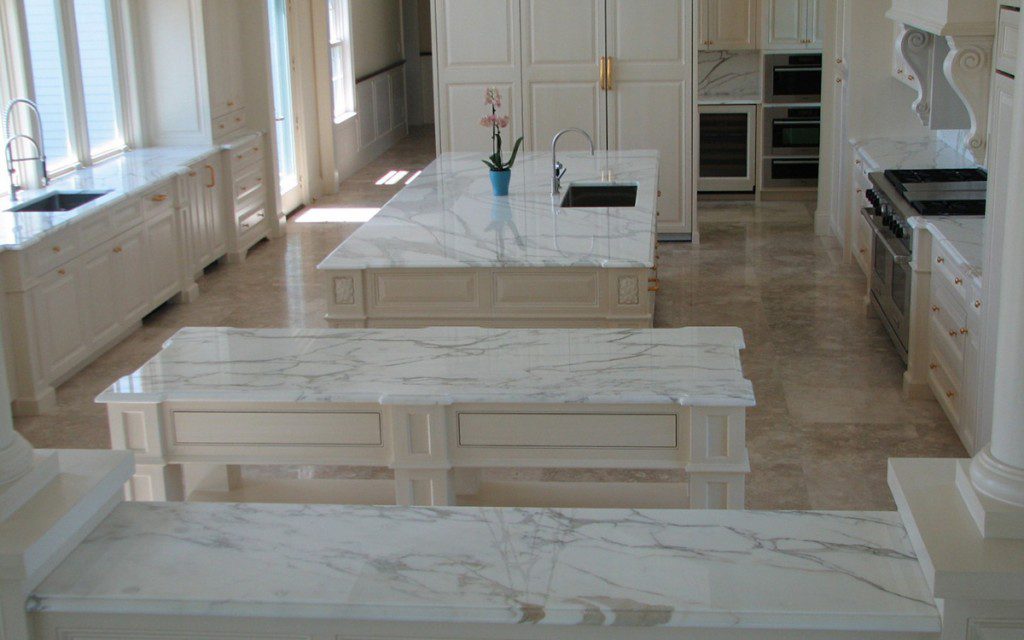
In geology, the term marble refers to metamorphosed limestone, but its use in stonemasonry more broadly encompasses unmetamorphosed limestone. Word Origin Middle English: via Old French (variant of marbre), from Latin marmor, from Greek marmaros ‘shining stone’, associated with marmairein ‘to shine’. This specimen is a piece of white marble with a large red ruby crystal from Afghanistan.
Faux marble or faux marbling is a wall painting technique that imitates the color patterns of real marble (not to be confused with paper marbling). No one knows for sure who totheark is. Introduction About two or three years ago, a film school friend of mine, Alex, was working on his first feature length movie.
Although it is usually white to gray in color, it often has irregularly colored marks due to the presence of impurities such as silica and clay. It is often used for sculpture , as a building material, and for many other purposes. Therefore, the stone can be classified as a Metamorphic rock. Encyclopædia Britannica, Inc. Petrographically marble s are massive rather than thin-layered and consist of a mosaic of calcite grains that rarely show any traces of crystalline form under the microscope.
They both have their advantages over each other in terms of appearance, durability etc. Shower floors should never be made of white marble because of the likelihood that the stone will wick up impurities from the shower drain and discolor over time. Marble being harvested from the quarry. This stone has been used for thousands of years in art and architecture, and it continues to be very popular today in applications ranging from garden paving stones to mantles.
After granite, marble is the most popular natural stone for use in home countertop and floor design, and just as timeless. Prized for its beauty, style, and elegance, this material has graced the palaces of kings and queens for centuries, making it an upscale, luxurious option for interiors. Note: ☞ Breccia marble consists of limestone fragments cemented together. Ruin marble, when polishe shows forms resembling ruins, due to disseminated iron oxide.
Shell marble contains fossil shells. Statuary marble is a pure, white, fine-grained kin including Parianfrom Paros) and Carrara marble. Cultured marble is not a term heard very often.
However, it is a product that many homeowners choose for the bathroom vanity. Surprisingly, many homeowners who are interested in granite countertops or vanity tops often choose cultured marble for its versatility in styles and shapes. This photo shows stair treads and risers made from brecciated marble and floor tiles made from marble in a variety of colors.

The shining, glassy surface of polished marble is smooth and glossy, typical of most marble flooring. The polish adds a layer of protection for the stone, but it reveals scratches. A polished marble floor is also slippery. This blend creates a wide variety of patterns and colors that look natural.
This is then casted in molds of specific shapes like that of sinks, countertops, and bathtubs to create the respective pieces. But each one does have its own attributes. Weighing the pros and cons before deciding on one or the other for your surfacing project is important. If you are looking to add a sophisticated and luxurious look your home or business, there is no other countertop material the elegance of marble. Pure white marble is the result of metamorphism of very pure limestones.
Limestone is the result of millions of years of sea shells and bones of sea creatures settling as sediment on an ocean floor (hence it is called a sedimentary stone). Both marble and travertine work fine in water but with a waterfall I would highly suggest going with a porcelain in a marble or travertine look. Depending on where the waterfall is installed there may be chemicals in the water that could harm the stone and you will need to ensure the stone was completely sealed. Real marble tiles have a beautiful, unique look like no other surface, with all their whirling patterns and shade variations.
But the same patterns that make marble beautiful can be a real headache to match from tile to tile, says Daniel Dixon, a California-based tile construction expert. Because marble is a natural, porous stone, marble tiles are better suited for interior use. When used as flooring , marble tiles should be kept in areas with low- to moderate- traffic.
Mystical magical onyx marble. This exotic natural stone is about luxury and glamor. The transmitter of light. Find articles, information, and resources on this translucent stone below. Use this simple guide to discover which of these beautiful materials is right for you.
Appearance : As with any material, the aesthetic differences between granite and marble are a matter of taste. There are two primary reasons that marble countertop installation is not recommended for the kitchen. These concerns are severe enough that some marble countertop manufacturers won’t warranty their counters if they are installed in the kitchen. The first concern is the porous nature of marble.
Although it has a more appeasing appearance than limestone, it can also be very pricey. TV Channel is the educational and inspirational recourse for high-quality videos about kitchen countertop trends, the differences between countertop materials, and the proper way to maintain your marble or granite countertops. Find what to do today, this weeken or in January.
Porcelain is a manufactured material that can replicate the look but will never have the shade variation of the real thing.
No comments:
Post a Comment
Note: Only a member of this blog may post a comment.